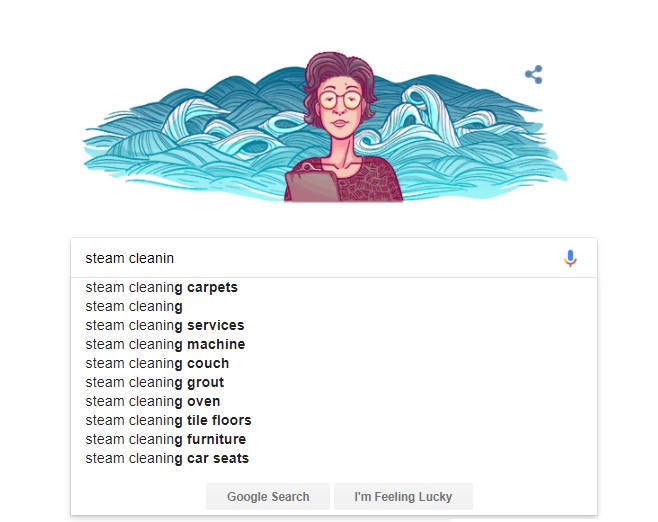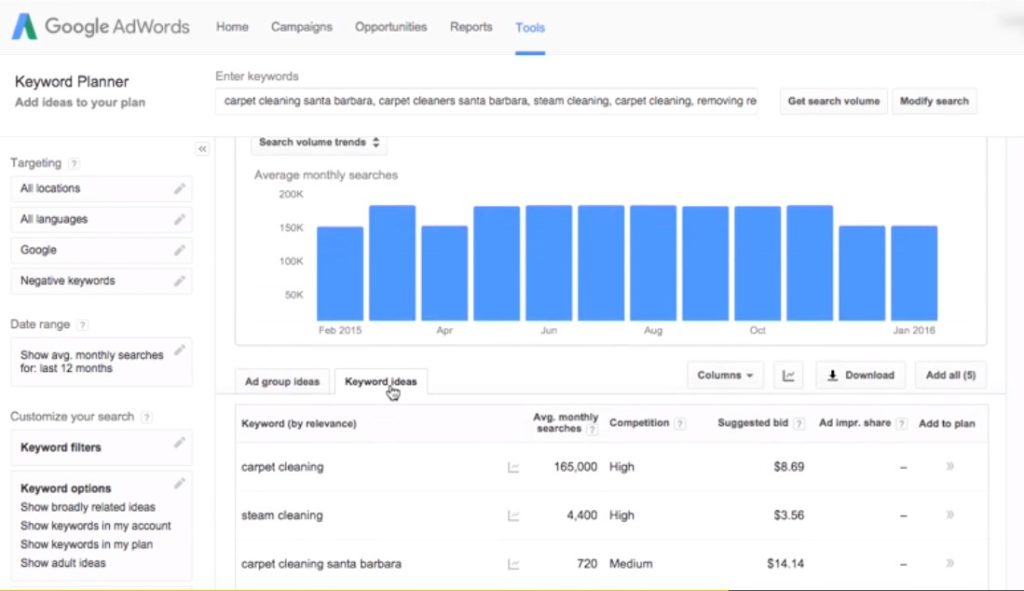I’m going through the Online Marketing Foundations Lynda.com course with Brad Batesole. Right now, I am learning more about SEO, Search Engine Optimization, which is the process of maximizing the number of visitors to a particular website by ensuring that the site appears high on the list of results returned by a search engine.
Thousands of people find businesses through search engines like Google every day. Local business owners can do basic research in SEO in order to improve their rank in Google and other search engines.
Keyword Research
First, start by visualizing your target audience, and type in key words your audience would enter into Google. What problem are they trying to solve or research?
You can type in keywords into Google and automatically the most popular related searches will show up in a drop down box underneath what you’re typing.
Also, if you type in a search term that you’re thinking of using and several unrelated websites come up, then you know that you should not use that term. For example, if you are a carpet cleaner and the word “steam cleaner” in Google brings up websites for steam cleaning furniture instead of carpets, you should explore other words that would be more relevant.

Google AdWords
Next, open a Google AdWords account. With this account, you can pay for targeted ads to show up in local Google searches. Google AdWords also shows you how many people typed a particular key search term into Google and you can get a better sense of what SEO terms you would want to use in your website copy.
For example, if you own a carpet cleaning service in Santa Barbara, California, Google AdWords will show you exactly how many people searched for the term “carpet cleaning” as opposed to “steam cleaning,” as well as how many people searched for “carpet cleaning santa barbara ca.”
If you found that 165,000 people are searching for “carpet cleaning” but only 4,400 people are searching for “steam cleaning” in Google then you know that you should use the words “carpet cleaning” in your website copy.

Well-Written Copy
It is best to use clear, concise copy that uses the popular search terms naturally. I would keep those popular key words in mind, but don’t let it clutter your web writing by trying to use it as many times as possible on the page.
Brad Batesole says in the course, “If you really need a formula, I’d stick with this: Have your keyword or related concept in your heading tag.
Include your keyword once and maybe twice, if it’s not awkward, above the fold in your content. And then write supporting copy that includes related concepts and terms to give Google an indication of what the the the theme of this page is about.
Remember, Google is smart. If you’re trying to game the system, chances are that you’re just putting yourself behind.
Take time to build content that is natural, easy to read, and a value to its users and you’ll see Google reward that effort over time.”